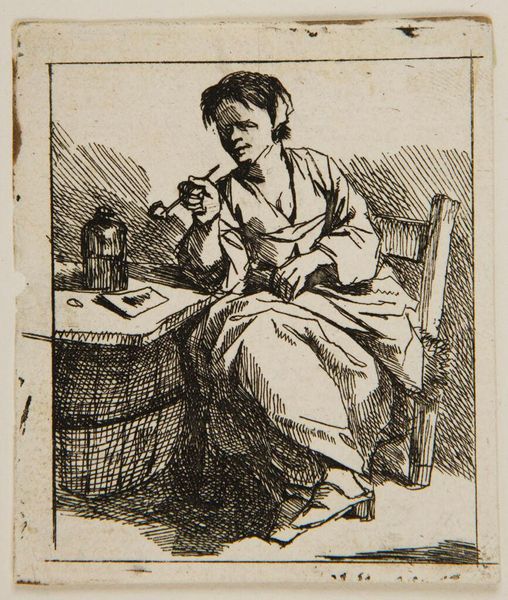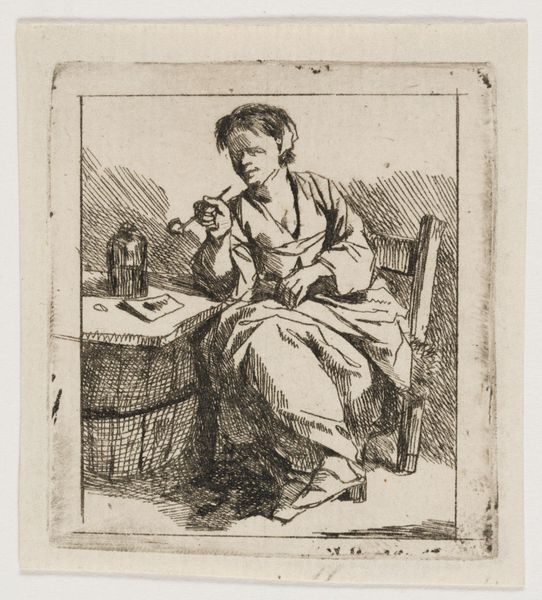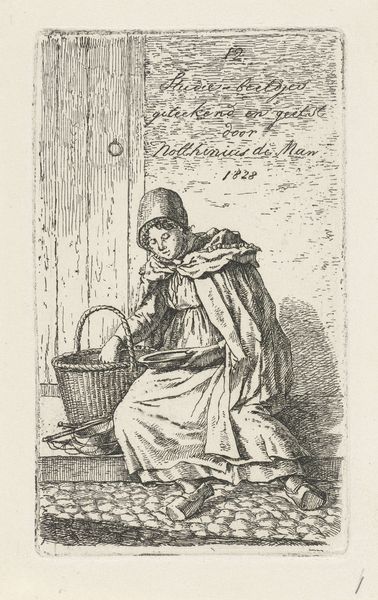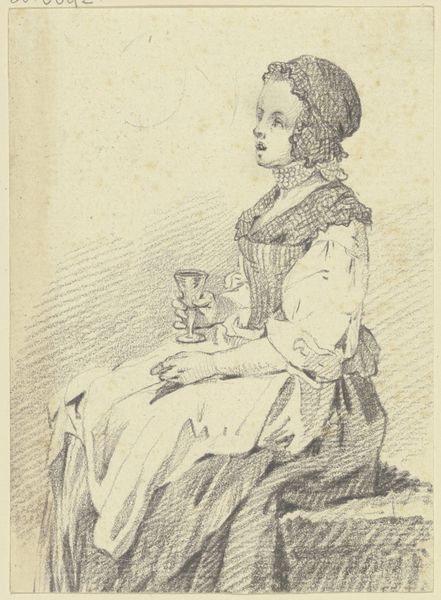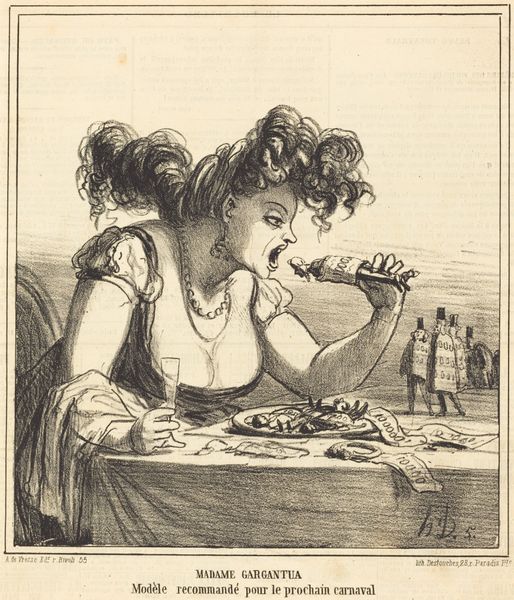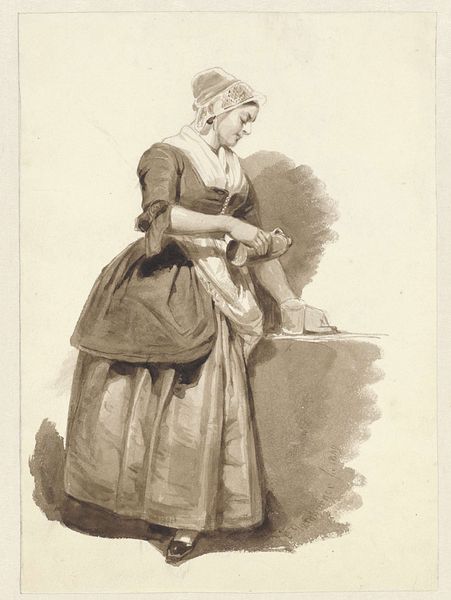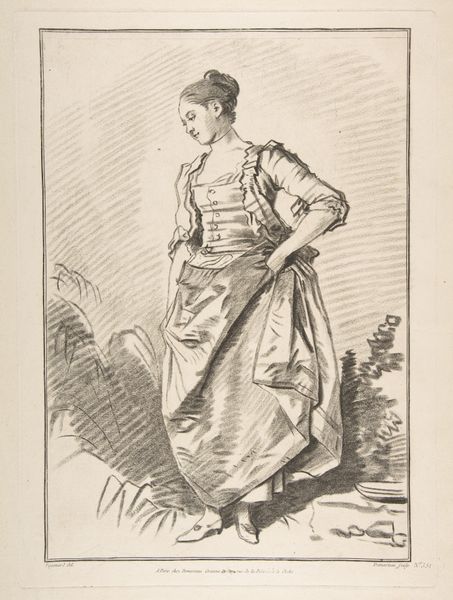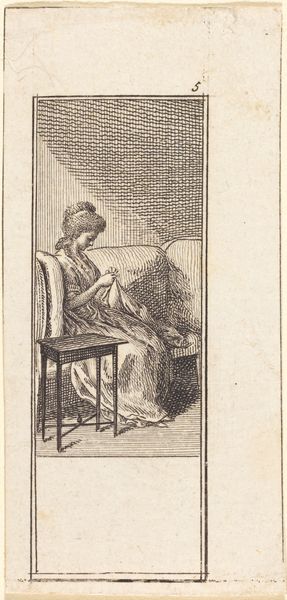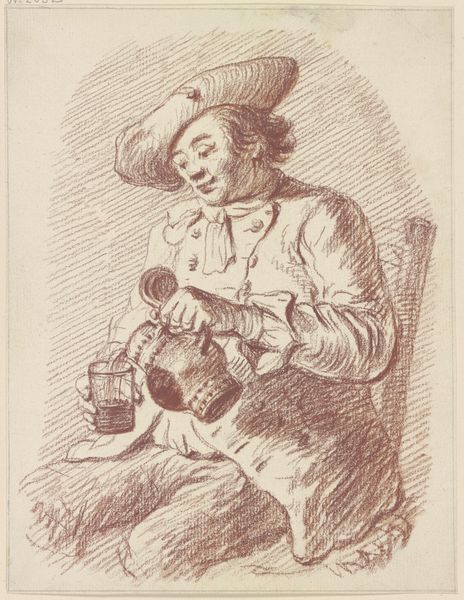
drawing, print, etching
#
portrait
#
drawing
#
aged paper
#
toned paper
#
light pencil work
#
baroque
#
dutch-golden-age
# print
#
etching
#
pencil sketch
#
old engraving style
#
sketch book
#
personal sketchbook
#
pen-ink sketch
#
sketchbook drawing
#
genre-painting
#
sketchbook art
Dimensions: sheet: 6.6 × 5.8 cm (2 5/8 × 2 5/16 in.)
Copyright: National Gallery of Art: CC0 1.0
Editor: So, here we have “A Woman Smoking,” an etching by Cornelis Bega. I'm struck by its informality. It feels like a glimpse into a very private moment. What's your take on this work? Curator: It's a seemingly simple genre scene, but placed within its socio-historical context, it becomes quite potent. Bega, working in the Dutch Golden Age, captured everyday life, often of the lower classes. The act of depicting a woman smoking, while commonplace, held symbolic weight. How might her depiction be viewed by the largely Calvinist Dutch society? Editor: That’s an interesting point! Perhaps it challenged certain societal norms? Was it considered improper for women to be smoking at that time? Curator: Exactly. While smoking was prevalent, its association with leisure and indulgence might have been viewed critically, especially when depicted so casually in a woman. Furthermore, considering the burgeoning art market, who do you think was the intended audience for prints like this? Editor: Probably the emerging middle class, those who were seeking affordable art to decorate their homes and also those who wanted to see more about ordinary life in art! So these depictions of everyday life catered to their interest in realism? Curator: Precisely. Genre scenes such as these, circulated widely as prints, not only offered entertainment but also served as a form of social commentary, shaping public perceptions. Consider, too, how images like this contributed to constructing ideas about gender and class within the broader culture. What do you make of her gaze, or her attire? How do those play into larger themes about women at the time? Editor: Her gaze is very direct. Her clothes are simple, and somewhat suggestive, hinting at working-class status perhaps. I guess I never thought about art this way! It really makes me consider what social commentary the art of our day reflects! Curator: Indeed! Reflecting on the public role of art is essential. This exercise shows art never exists in a vacuum; it's interwoven with cultural, social and political forces.
Comments
No comments
Be the first to comment and join the conversation on the ultimate creative platform.
